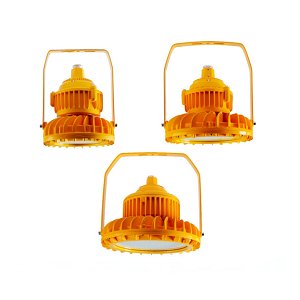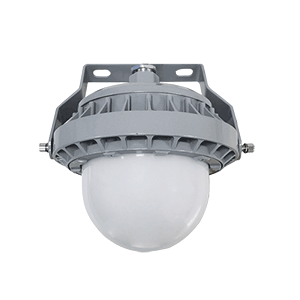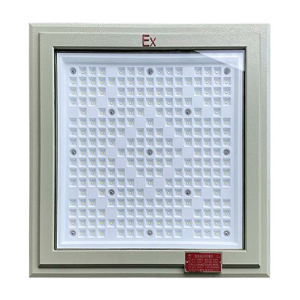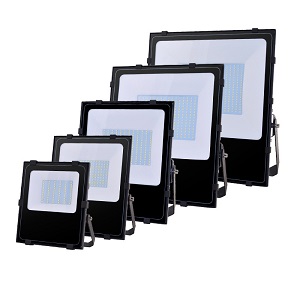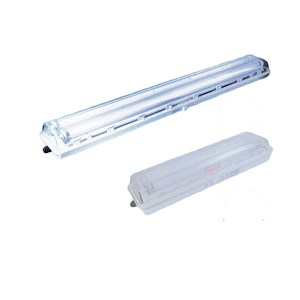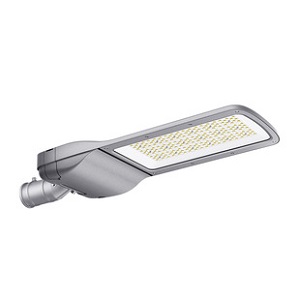How long do LED lights lifespan?
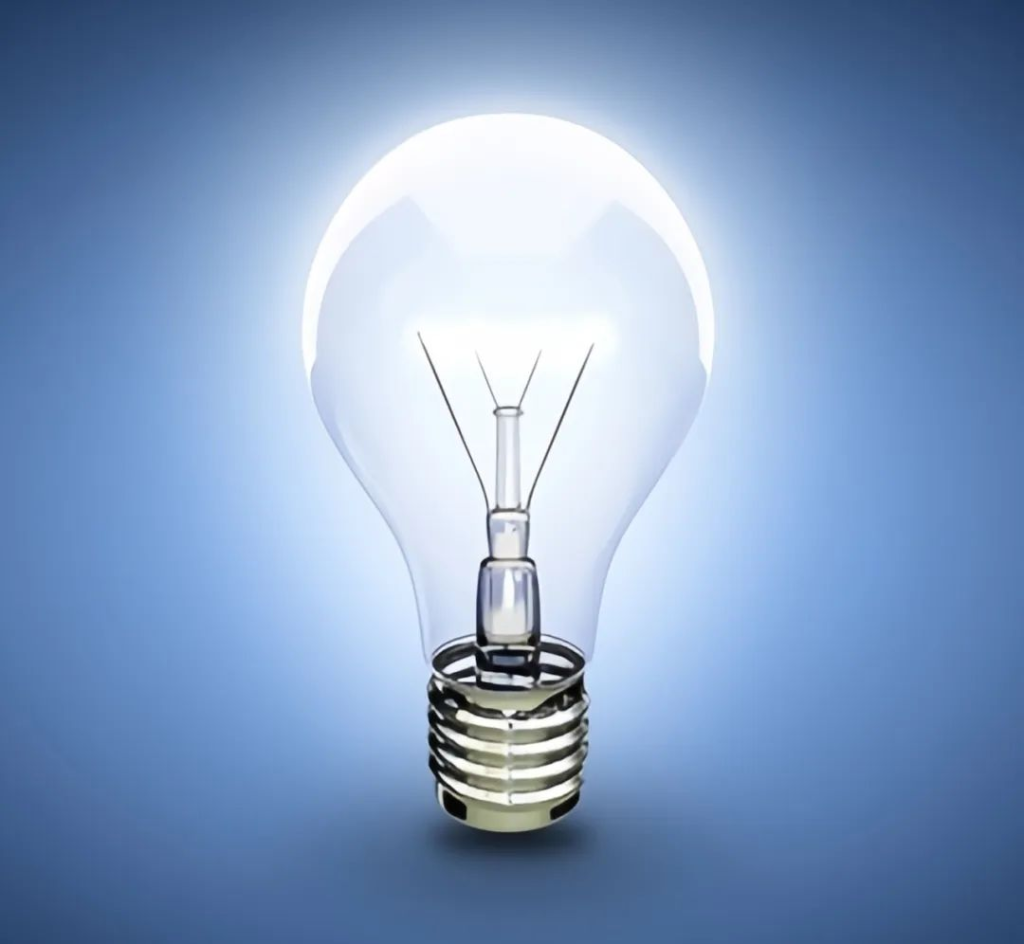
LED lights are gradually replacing a range of traditional fixtures thanks to their long life and the huge economic benefits they bring. However, we can always hear customers complain about the LED lights they purchased, saying that they are not durable at all. So, how long do LED lights actually last and how can you extend their service life? Keep reading for the most professional information about LED lights!
How long do LED lights lifespan?
Individual light-emitting diode (LED) lamps have a theoretical service life of up to 100,000 hours. However, since other electronic components also have a service life, LED bulbs, once assembled, do not have a service life of 100,000 hours. Generally, it is about 50,000 hours.
LED lights do not suffer from fused filaments, which is what makes them so long-lasting.LED lights age gradually over time, rather than suddenly stop working. Overall, after 50,000 hours of continuous use, high-quality LED lights retain more than 60% of their initial brightness. If an LED light reaches the end of its nominal service life, it may still be glowing, only the light will be very faint.
Comparison of the service life of LED lamps and traditional lamps
Despite the higher up-front investment cost of LED lamps, they are more durable due to their long service life, which reduces the need for repeated replacements. A study comparing the replacement of traditional high-pressure sodium lamps with LED streetlights found that 20 times as many traditional fixtures needed to be replaced as LED fixtures.
The bar chart below compares the service life of common light sources:
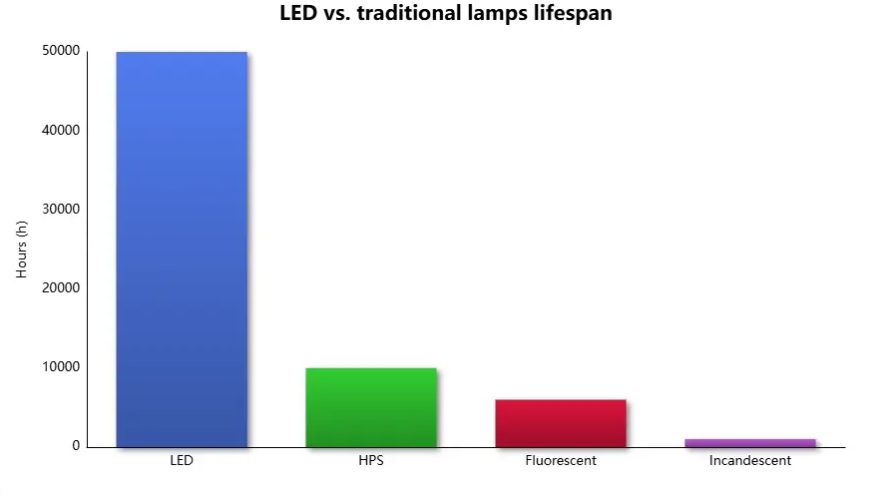
LED lights themselves do not wear out, but they do suffer from light degradation, which manifests itself as a gradual decrease in luminous intensity after 4,000 to 10,000 hours of operation, as well as a shift in color temperature. Good thermal design, the use of constant-current power supplies and the use of aging-resistant packaging materials can help delay the occurrence of LED light failure. According to the L70 standard (i.e., the luminous flux maintenance rate standard), it is generally believed that when the output luminous flux of an LED lamp drops to 70% of its initial value (around 50,000 hours), the LED lamp reaches the end of its service life.
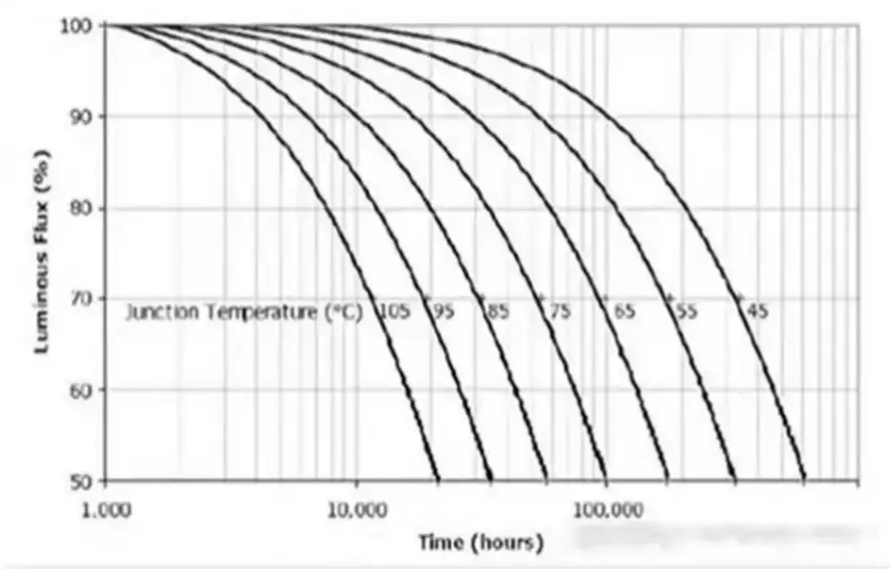
Factors affecting the service life of LED lights
Thermal Management: Since LED light beads are extremely sensitive to heat, high temperatures will shorten their service life. Therefore, efficient thermal management (including heat dissipation materials, heat dissipation structure and thermal design) is crucial. Thermal management is especially important for outdoor lamps such as street lights.
Current and voltage: If the current or voltage is too high or too low, it may cause damage to the LED chip or reduce its brightness. In addition, the volt-ampere characteristics of LEDs indicate that their power source should only be a constant-current power supply. Using a non-constant-current power supply will limit the life of the LED light and cause it to decay rapidly.
Environmental factors: Unfavorable environmental factors can shorten the service life of LED lights, such as high temperature, high humidity, strong vibration or corrosive gases. The accumulation of dust and bird droppings will reduce the cooling efficiency of outdoor lighting fixtures. In addition, the strong UV radiation generated by the outdoor environment will also shorten the service life of LEDs.
How can manufacturers make more durable LED lights?
In order to maximize the service life of LED lights, manufacturers need to be careful in the production process.
Thermal Design: Thermal design needs to be optimized at each stage of the production process. These steps include chip level, package level, board level and system level. Thermal vias are added to the LED’s thermal base and peripheral areas, followed by a layer of copper foil to minimize the thermal resistance of the heat sink substrate. In addition, heat sinks such as heat sinks, heat pipes, heat equalization plates, loop heat pipes, piezoelectric fans, and other heat sinks will be used.
Epoxy Resin Problem: Since the encapsulation resin for white LEDs reflects the light produced, discontinuing the use of epoxy resin encapsulation eliminates the associated aging degradation factors. However, the use of resin reflectors can lead to a significant reduction in the amount of light emitted. This is the main reason why metal encapsulation materials and ceramic encapsulation materials are widely used.
Influence of encapsulation process: Under the same aging environment, the degree of light degradation of LED lamps encapsulated with conventional sealing process is 76% lower than that of LED lamps encapsulated with Class A low attenuation glue. Therefore, the use of high-quality encapsulation process LED lamps, will significantly extend its service life.
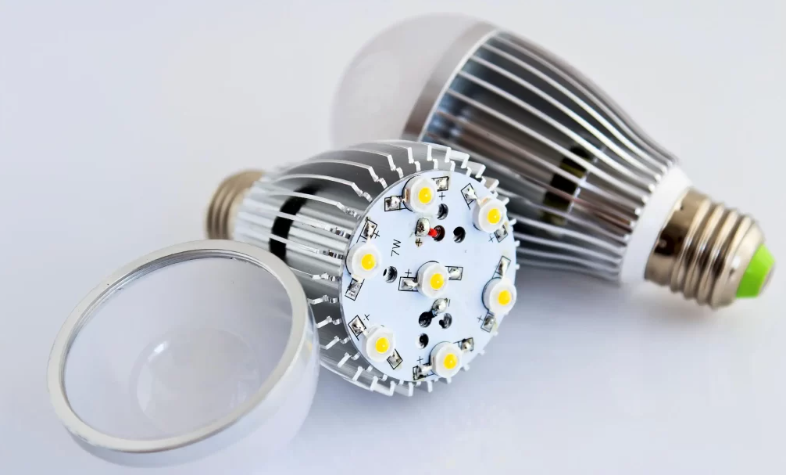
Real user data: how long do LED lights actually lifespan ?
In practical applications, due to the existence of a variety of influencing factors, many LED lamps and lanterns can not reach its ideal service life. The following is the real experience of LED lamp service life shared by users for reference:
Reddit user 1: Has been in use for 32 months (2.5 years) and is still working properly as of 2025; has been continuously powered up since purchase.
Reddit user 2: Started malfunctioning after about 3 years of use, 2 to 4 hours of daily use. The bulb is a low cost product.
Reddit user 3: Multiple light bulbs have been in continuous use for over 3 years, one of which is 6 years old but has lost significant brightness. The bulb is energized almost all day.
Reddit user 4: Low power LED bulbs have been in use for over 5 years and are still performing consistently. Longer daily use, but no more than 16 hours.
Quora user 5: Multiple LED lights have been used for several years without failure, these bulbs are used in typical home lighting environments and remain continuously energized.
How to extend the lifespan of LED lights?
By analyzing the factors that affect the life of LEDs, targeted maintenance measures can be taken to effectively reduce long-term costs. The following guidelines will help you extend the life of your LED luminaires:
Ensure good heat dissipation conditions: LED luminaires should be installed in well-ventilated areas to avoid direct sunlight and the influence of heat generating equipment. At the same time, regularly clean the dust on the surface of the radiator and lamps to maintain efficient heat dissipation performance.
Avoid frequent switching operations: Although frequent switching has less of an impact on LED lights than traditional fixtures, it may still cause slight losses to the circuit. It is recommended to minimize the switching frequency.
About long-term continuous use: The continuous operation characteristics of LED lamps make their heat generation extremely low, but after a long period of operation may still produce heat accumulation, which in turn affects the service life. If you need to use the lamps for a long period of time, it is recommended to use high-quality LED products with excellent heat dissipation performance.
Dimming and Smart Function Application: Luminaires equipped with smart functions can be selected to realize automatic shutdown when no one is lighting and provide adjustable brightness settings, thus reducing current consumption and avoiding overheating.
Висновок
LED lamps have a significantly longer lifespan than conventional lamps. By reading this article, you should be able to have a more comprehensive understanding of the actual life performance of LED lamps, the way life is evaluated, the factors that influence it, and the ways to extend its life.

